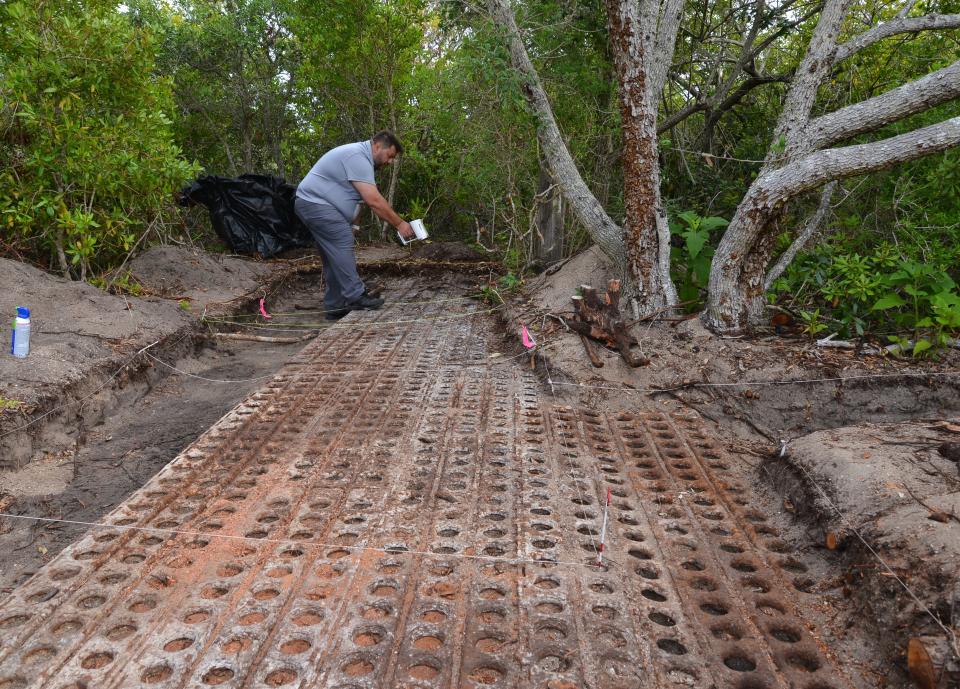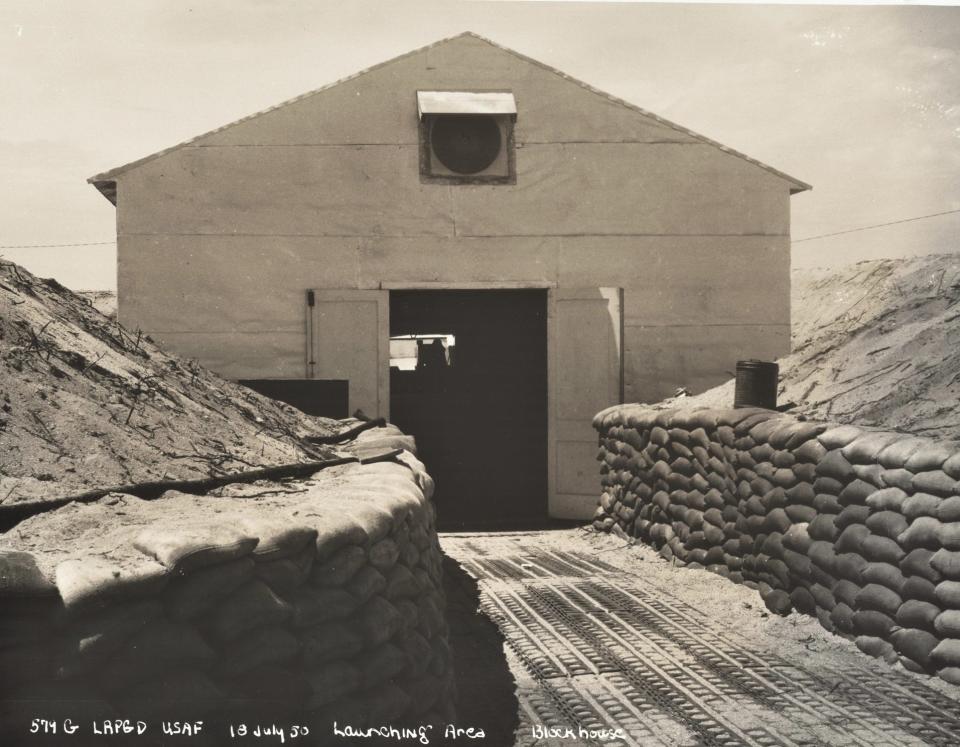Archaeological study of Cape Canaveral's first rocket launch site expands to 3D mapping
Wielding a handheld optical scanner, Jorge González meticulously maneuvered across an archaeological grid of white string and metal pins, creating a 3D digital map of a newly excavated steel-mat corridor that led into the long-demolished Bumper blockhouse.
Military technicians walking along that Marston-mat entryway made history on July 24, 1950, by entering that tarpaper shack and using bulky electronics to launch Bumper 8 — America's first rocket to soar skyward from what is now Cape Canaveral Space Force Station.
"We're documenting this with 3D technologies. For something like this, we're using what's called a close-range structured light scanner," said Travis Doering, co-director of the University of South Florida's Center for Digital Heritage and Geospatial Information, pointing at the entryway.

"This was the first blockhouse ever built out here. And it was built as a temporary one, made out of wood," Doering said.
"Virtually zero information" was documented about this Bumper blockhouse "firing room," said Tom Penders, Space Launch Delta 45 cultural resources manager. The military hastily built the wood-frame structure in May and June 1950 about 400 feet from the pad at long-abandoned Launch Complex 3, according to the Cape Canaveral Space Force Museum website.
Bumper 8 was a groundbreaking 62-foot experimental two-stage rocket: a German V-2 rocket mated with a U.S. WAC Corporal rocket. The sandbag-protected blockhouse featured a periscope-like window with reflective mirrors so technicians could see the pad.
When is the next launch: Is there a launch today? Upcoming rocket launch schedule for SpaceX, ULA, NASA in Florida
"From this wee step evolved such giant strides as the orbiting of satellites, Saturn 5 missions to the moon, the launch of Space Shuttles, the International Space Station, and probes beyond the reaches of the solar system,” said a July 2000 FLORIDA TODAY editors' column commemorating the launch's 50th anniversary.
“We at Florida Today think — we know — that the launch of Bumper 8 had enormous impact on the lives of every one of us in Brevard County,” the column said.

Now, a team of University of Central Florida Department of Anthropology students is wrapping up its second spring season surveying, excavating and documenting artifacts at the Bumper blockhouse site — with an eye on the launch's upcoming 75th anniversary. The Cape's second-ever launch, Bumper 7, occurred at the same site five days after Bumper 8.
"To me, it's an honor to be standing here," Doering said, standing on the former blockhouse's 20-by-20-foot concrete slab foundation.
"This is where the computers were, and the guys doing the most technical work — inside this little room for the first two launches ever at the Cape. You can directly trace the generational changes that came out of this," Doering said.
"Even the stuff they're building today, you can trace parts of it back here. It's a pretty important historical site," he said.
Snakes, alligators, dense vegetation part of UCF archeological course
The Bumper blockhouse is a showcase study by the Cape Canaveral Archaeological Mitigation Project, an internship-field school partnership between UCF and Space Launch Delta 45. Students conduct aerospace archaeological surveys and excavate historically significant sites amid the uninhabited Cape's primitive wilds.
"Field conditions can be harsh including heat, cold, insects, snakes, alligators, and dense vegetation," reads a course description. Students must be able to lift 50 pounds, walk long distances across wetlands, and dig with shovels. Security clearances are also required, and no foreign nationals can participate.
This semester, 17 UCF undergraduates and two graduate students are enrolled in CCAMP. Since inception, the program has produced 97 undergraduate alums and seven graduate alums, said Sarah “Stacy” Barber, a UCF anthropology professor.
Doering and González, a USF 3D applications engineer, mapped the Bumper blockhouse site last week using terrestrial laser scanners. Previously, USF researchers created a 3D digital model of a long-submerged dugout canoe that Hurricane Irma's waves washed onto Indian River Drive in Cocoa in September 2017. The canoe, which was crafted from Southern red cedar, is now displayed at Cape Canaveral's CAPE Center.
Artifacts found at Bumper 8 excavation site
"Next year is the 75th anniversary of that first launch. Even these students' parents weren't born when Bumper launched," said Roger McCormick, a Cape Canaveral Space Force Museum docent.
McCormick rattled off a list of artifacts unearthed thus far at the blockhouse study site:
Mirror fragments from the periscope rocket viewing system.
A Coca-Cola bottle that was distributed from Cocoa.
Sections of tarpaper from the roof.
Burlap from sandbags piled around the building.
Part of a comb.
"I wonder if the people who were working here back in 1950 thought, 'Hey, 75 years from now, they're going to be doing archaeology right where we're standing. We're going to be that important,' " McCormack said.
For the latest news from Cape Canaveral Space Force Station and NASA's Kennedy Space Center, visit floridatoday.com/space.
Rick Neale is a Space Reporter at FLORIDA TODAY. Contact Neale at Rneale@floridatoday.com. Twitter/X: @RickNeale1
This article originally appeared on Florida Today: UCF students excavating Cape's 1st launch site before 75th anniversary

